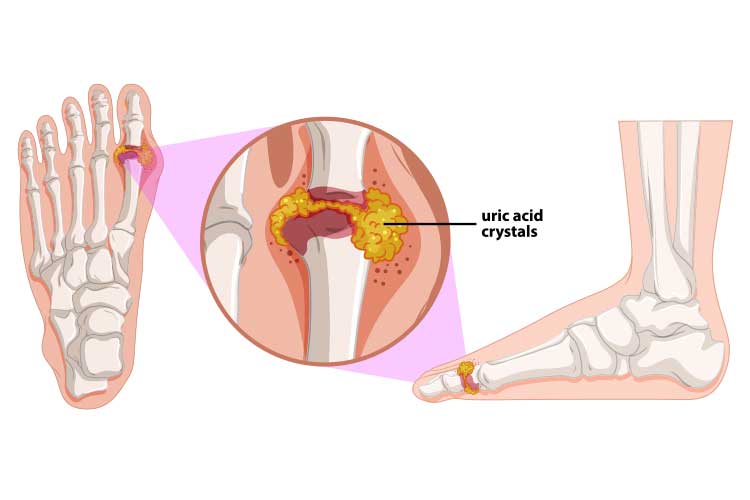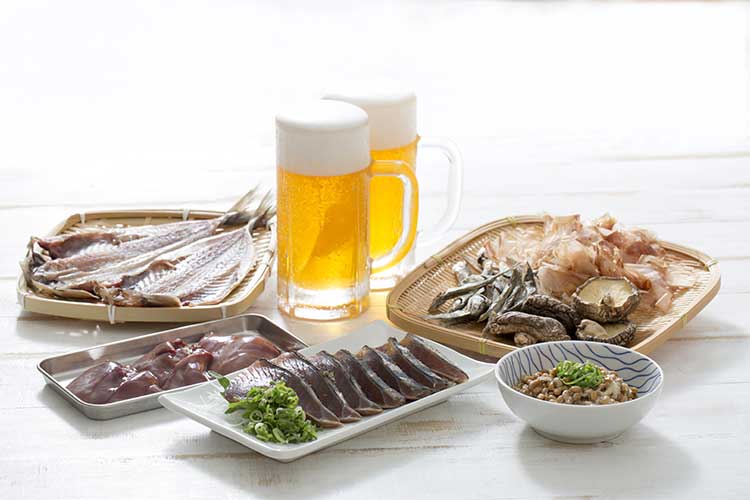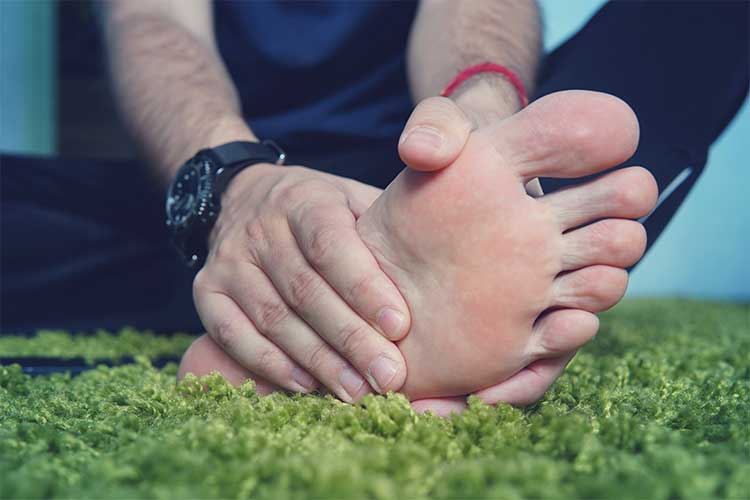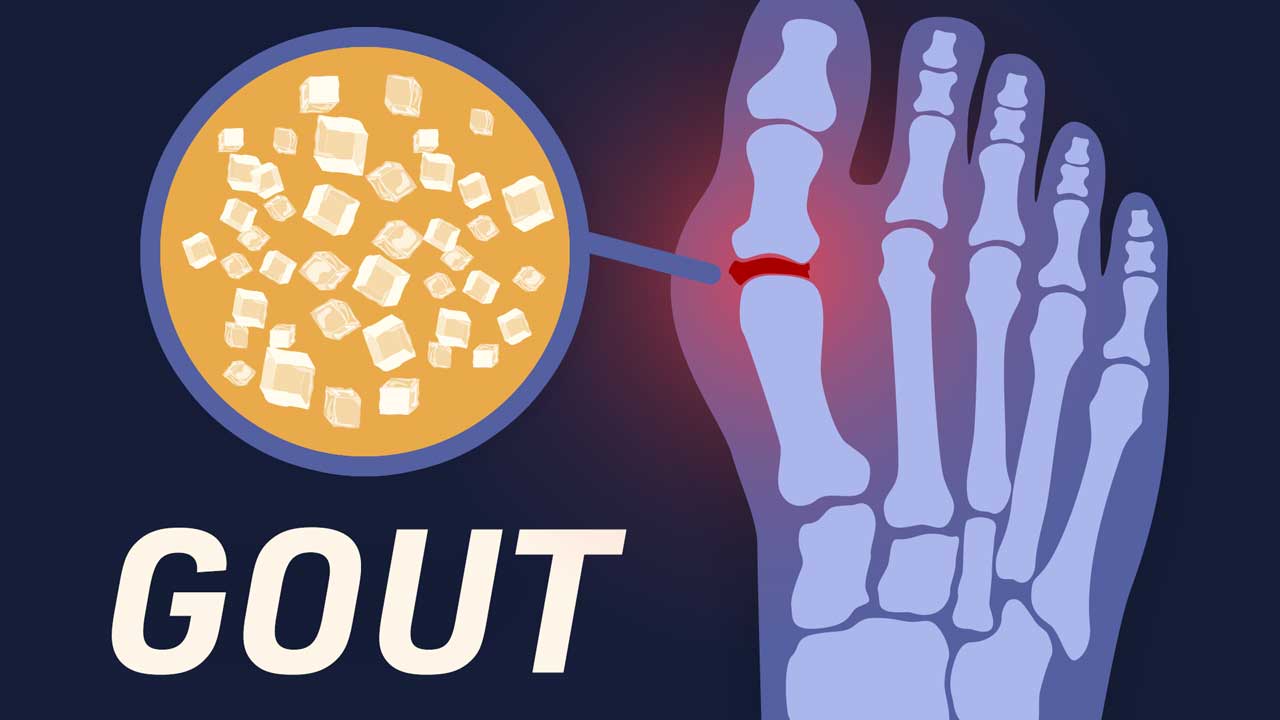Gout affects around 0.9% of Australians, causing severe episodes of pain and swelling that often occur without any warning (Better Health Channel 2024; AIHW 2024).
Gout is a common type of inflammatory arthritis that causes sudden flares of pain, swelling and redness in the joints. Symptoms have a much quicker onset than other forms of arthritis, and attacks often occur overnight (Better Health Channel 2024).
Gout generally affects joints in the limbs, such as feet, ankles, knees, elbows, wrists, fingers and toes (especially the big toe) (Better Health Channel 2024).
What Causes Gout?
Gout is caused by an excess of uric acid - a byproduct that is normally excreted through urine. When there is excess uric acid in the blood, either because the kidneys can not excrete it quickly enough or because too much has been produced, it forms crystals (‘urate’) in the joints. These crystals cause painful inflammations (Harvard Health Publishing 2023; Healthdirect 2024).
Hyperuricaemia is the term used to describe high levels of uric acid in the blood. This condition alone is not necessarily a prerequisite to gout and can be present without symptoms, suggesting that gout is instead the result of a combination of factors (Better Health Channel 2024).

Risk Factors for Gout
- Sex (males are more at risk than females)
- Family history of gout
- Excessive levels of uric acid in the blood
- High level of alcohol consumption (especially beer)
- Diets high in purines (e.g. meat, offal, shellfish and foods high in fructose)
- Being overweight or obese
- Use of diuretics
- Type 2 diabetes, hypertension or high cholesterol
- Kidney disease
- Crash diets or fasting.
(Better Health Channel 2024)

How Common is Gout?
According to self-reported data, 224,000 Australians (0.9%) have gout. Among these individuals, 75% are male (AIHW 2024).
Signs and Symptoms of Gout
- Joint pain, which is often severe
- Joint swelling and tenderness
- Red, shiny skin and warmth over the affected joint
- Impeded movement of the affected joint
- Tophi - lumps of crystals that form over the skin and may occur in those who have experienced repeated flares.
(MHA 2024; Healthdirect 2024)
If untreated, gout attacks usually last around one week (Arthritis Australia 2024). If repeated attacks occur, it may become a chronic condition (AIHW 2024).
Chronic gout symptoms may include:
- Permanent damage to joints
- More frequent and severe flares
- Kidney disease and kidney stones
- Heart issues.
(Arthritis Australia 2024)

Diagnosing Gout
A combination of medical tests may be conducted to determine if someone has gout, but the most definitive method of diagnosis is to take a sample of fluid from the affected joint and look for uric acid crystals under a microscope (Better Health Channel 2024).
A blood test can measure urate levels in the body but does not necessarily indicate gout (Better Health Channel 2024). Urate levels may even be normal or lower than usual during a flare (Clinical Excellence Queensland 2023).
Treating Gout
The first step to treating gout is generally to manage an acute attack by alleviating any pain and inflammation. This may involve medication and rest (MHA 2024).
If the person is experiencing recurring attacks, medication may be prescribed to lower the level of uric acid in their blood. They may also be encouraged to make lifestyle changes such as reducing alcohol intake, losing weight and maintaining a balanced diet (Healthdirect 2024).
Managing Gout
Future flares may be prevented through strategies such as:
- Taking medication that has been prescribed
- Maintaining a healthy body weight (and if weight loss is suggested, doing so gradually)
- Drinking alcohol in moderation
- Eating in moderation
- Staying hydrated
- Exercising regularly (at least 30 minutes per day, most days of the week)
- Working with a general practitioner to manage future attacks.
(MHA 2024)
Test Your Knowledge
Question 1 of 3
How is gout most definitively diagnosed?
Topics
References
- Arthritis Australia 2024, What About Gout?, Arthritis Australia, viewed 7 March 2025, https://arthritisaustralia.com.au/wordpress/wp-content/uploads/2025/02/What_About_Gout_FactSheet_v5_sml.pdf
- Australian Institute of Health and Welfare 2024, Chronic Musculoskeletal Conditions: Gout, Australian Government, viewed 7 March 2025, https://www.aihw.gov.au/reports/chronic-musculoskeletal-conditions/gout
- Better Health Channel 2024, Gout, Victoria State Government, viewed 7 March 2025, https://www.betterhealth.vic.gov.au/health/conditionsandtreatments/gout
- Clinical Excellence Queensland 2023, Gout Emergency Department Factsheets, Queensland Government, viewed 7 March 2025, https://clinicalexcellence.qld.gov.au/sites/default/files/docs/resources/gout.pdf
- Harvard Health Publishing 2023, All About Gout, Harvard Medical School, viewed 7 March 2025, https://www.health.harvard.edu/newsletter_article/all-about-gout
- Healthdirect 2024, Gout, Australian Government, viewed 7 March 2025, https://www.healthdirect.gov.au/gout
- Musculoskeletal Health Australia 2024, Understanding Gout, MHA, viewed 7 March 2025, https://muscha.org/gout/

